
Andalusia Farm
Andalusia served as the home of famed American author Flannery O’Connor from 1951-1964. First settled in 1814, Andalusia was a cotton plantation and farm until it was purchased by Flannery’s uncle Dr. Bernard Cline in 1931. During the O’Connor’s residency, the site contained 14 buildings with over 520 acres of land that was used for dairy and beef farming. Following a diagnosis of Lupus in 1951, O’Connor moved to Andalusia to live under the care of her mother Regina Cline O’Connor. During the 13 years she lived at Andalusia, she completed the bulk of her literary work, as the farm’s environment influenced the setting of many of her writings. Following her death in 1964, the farm remained in the family until 2003 when it was given to a private foundation for use as a museum. In August 2017, the site was gifted to O’Connor’s alma mater, Georgia College. Today, Andalusia serves as a museum whose mission is to care for, collect, interpret, and exhibit items that illustrate the history of the site during the time which Flannery O’Connor lived on the property (1951-1964).
Andalusia is open for public tours and was listed on the National Register of Historic Places in 1980. Hours of operation are Tuesday-Saturday from 10-4 and Sunday from 2-4, with all tours on the hour and the last tour beginning at 4PM. The property will close each day to public visitors at 5PM and they are closed on Mondays. View Andalusia as a 360 degree panovision video!
Credit: Milledgeville-Baldwin CVB

Andalusia Farm
Andalusia served as the home of famed American author Flannery O’Connor from 1951-1964.
Credit: Milledgeville-Baldwin County CVB
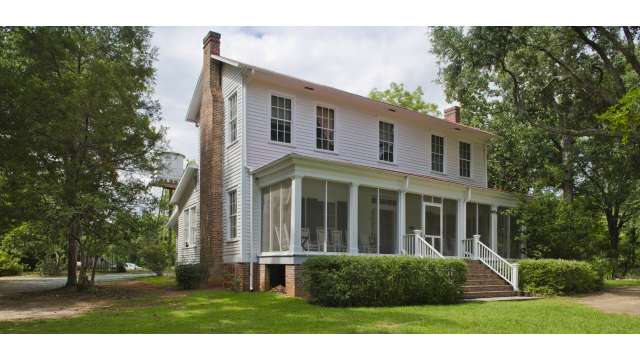
Andalusia Farm
Andalusia is the picturesque farm where the highly acclaimed American author Flannery O’Connor lived from 1951 until her death in 1964. This 544-acre estate is where O’Connor found the source of many of the settings, situations, and fictional characters that are the signature of her stories

Similar typewriter to the one Flannery O'Connor used at Andalusia
Andalusia is the picturesque farm where the highly acclaimed American author Flannery O’Connor lived from 1951 until her death in 1964. While living at Andalusia, Flannery O’Connor completed Wise Blood, which was published in 1952. Then her highly acclaimed collection of short stories A Good Man Is Hard To Find was published in 1955. She also wrote another novel, The Violent Bear It Away, published in 1960.
Credit: Flannery O'Connor's typewriter at Andalusia
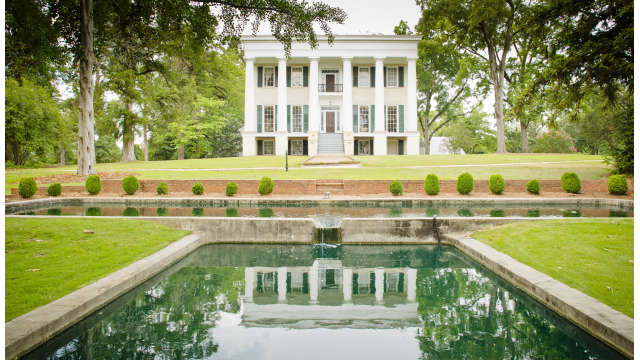
Rose Hill
A Greek Revival home, Rose Hill is the centerpiece of Lockerly Arboretum. The mansion is a significant example of the finest plantation architecture of the Milledgeville area as well as the Old South.

Rose Hill at Lockerly Arboretum
Rose Hill, a Greek Revival home circa 1852, is the centerpiece of the Lockerly Arboretum, and presides over its surroundings with elegance and grace.
Credit: Milledgeville-Baldwin CVB

Rose Hill
Rose Hill, a Greek Revival home circa 1852, is the centerpiece of the Lockerly Arboretum, and presides over its surroundings with elegance and grace.
Credit: Milledgeville-Baldwin CVB

The Old State Capital Building
Circa 1807, the Old Capitol is considered the first example of Gothic architecture in a public building in the United States. It served as the seat of government for the State of Georgia from 1807 to 1868, and in its legislative chambers the Secession Convention was held in 1861. Since 1879, Georgia Military College has occupied the historic site. The building underwent a $10 million renovation in 2000.
Tours of the legislative chambers are included on the Historic Trolley Tour.

Old Capitol Legislative Chambers
The debates held in this room affected the course of the nation and shaped the future of Georgia. The most famous of these was the Secession Convention in 1861 which resulted in Georgia becoming the fifth state to secede from the Union.

Trolley at Old State Capital
Circa 1807, the Old Capitol is considered the first example of Gothic architecture in a public building in the United States. It served as the seat of government for the State of Georgia from 1807 to 1868, and in its legislative chambers the Secession Convention was held in 1861. Since 1879, Georgia Military College has occupied the historic site. The building underwent a $10 million renovation in 2000.
Tours of the legislative chambers are included on the Historic Trolley Tour.

Historic Trolley Tour
Take a guided tour through Milledgeville’s historic downtown.
Credit: Visit Milledgeville

Georgia's Old Governor's Mansion
Another historic site not to be missed in Milledgeville is the Old Governor’s Mansion. One of the finest examples of High Greek Revival architecture, the Mansion served as home to the governors of GA from 1839 to 1868.
Credit: Visit Milledgeville
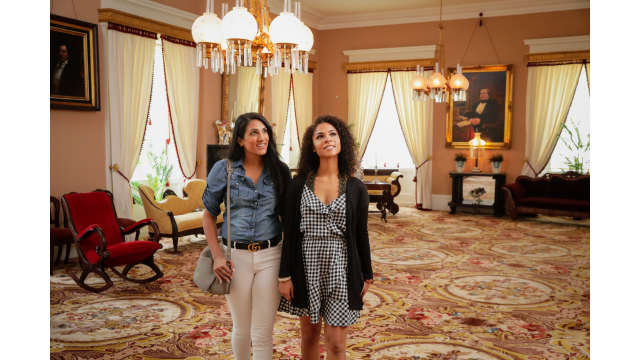
Georgia's Old Governor's Mansion
Completed in 1839, Georgia's Old Governor's Mansion is one of the finest examples of High Greek Revival architecture in the nation.
Credit: Milledgeville-Baldwin CVB

Rotunda at Georgia's Old Governor's Mansion
Completed in 1839, Georgia's Old Governor's Mansion is one of the finest examples of High Greek Revival architecture in the nation.
Credit: Milledgeville-Baldwin CVB

ST. STEPHEN'S EPISCOPAL CHURCH
St. Stephens Episcopal Church’s present day sanctuary was erected in 1843 and is the oldest existing church structure in Milledgeville. Inside you can view the chancel window of Old English glass that was a gift from the Christ Church in Savannah.
Credit: Visit Milledgeville

Memory Hill Cemetery
Originally designated as one of the four public squares of twenty acres each in the Milledgeville town plan of 1803, it later came to be known as Cemetery Square. Many people associated with Milledgeville and Georgia history, such as L.Q.C. Lamar, Congressman Carl Vinson, and Flannery O'Connor, as well as early Georgia governors, legislators, college presidents, slaves, and soldiers, are buried here.
Credit: Milledgeville-Baldwin CVB

Brown-Stetson-Sanford House
An architectural gem built by John Marlor in the "Milledgeville Federal" style with its characteristic columned double porch. It served the state capital as the Beecher-Brown Hotel and then the State's Rights Hotel for the many visiting legislators who came to the area. Don't miss the spiral staircase which is a Marlor trademark. Open by appointment and on the Historic Trolley Tour.
Credit: Milledgeville-Baldwin CVB








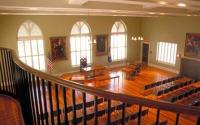
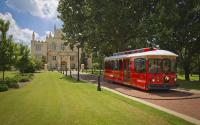
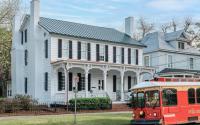
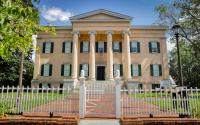


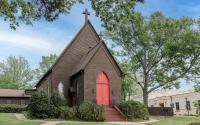
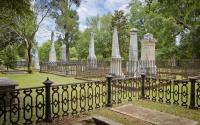

 Things To Do
Things To Do
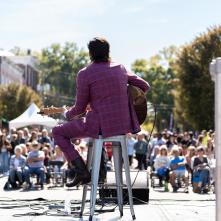 Events
Events
 Food & Drink
Food & Drink
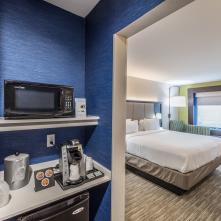 Hotels & Lodging
Hotels & Lodging
 Plan Your Trip
Plan Your Trip

